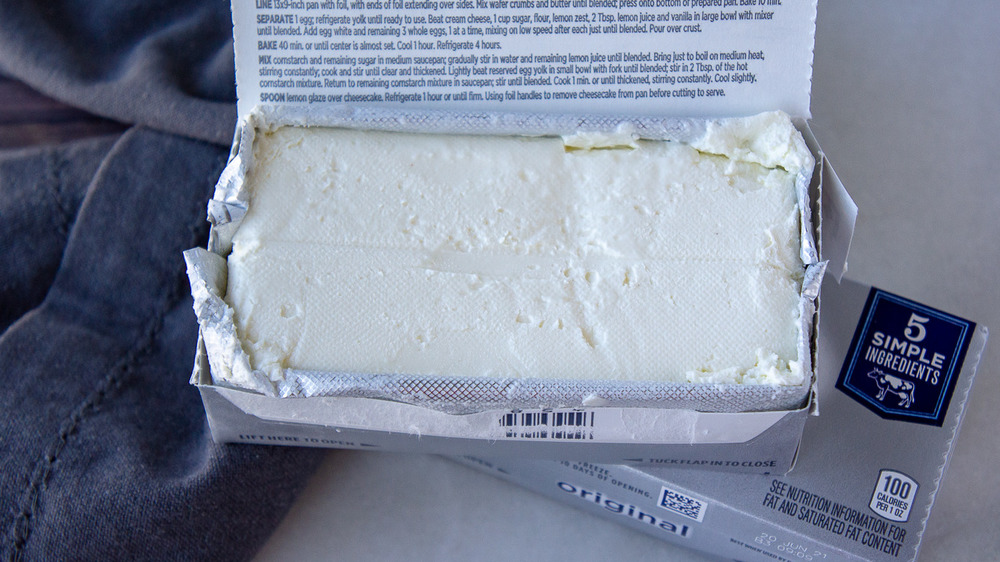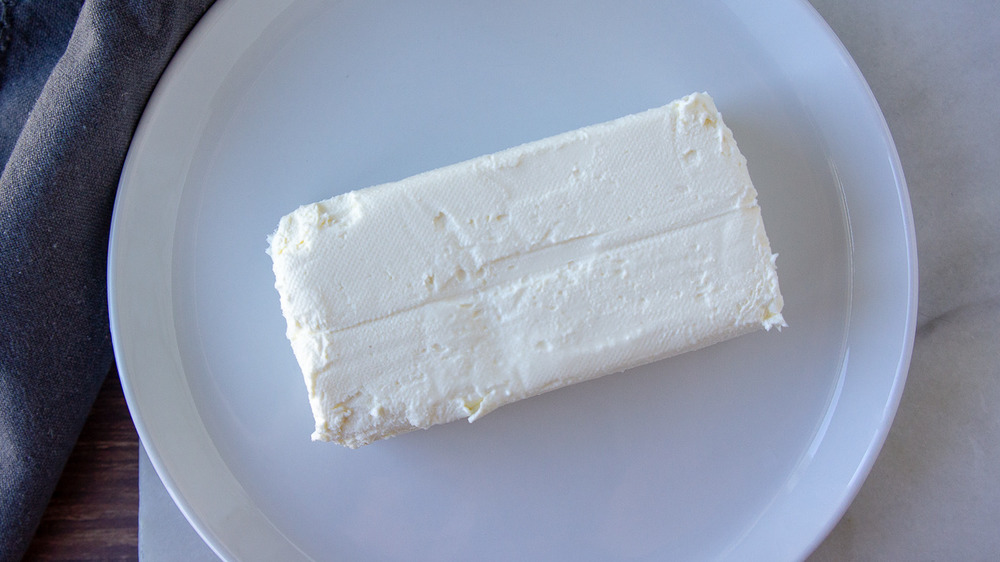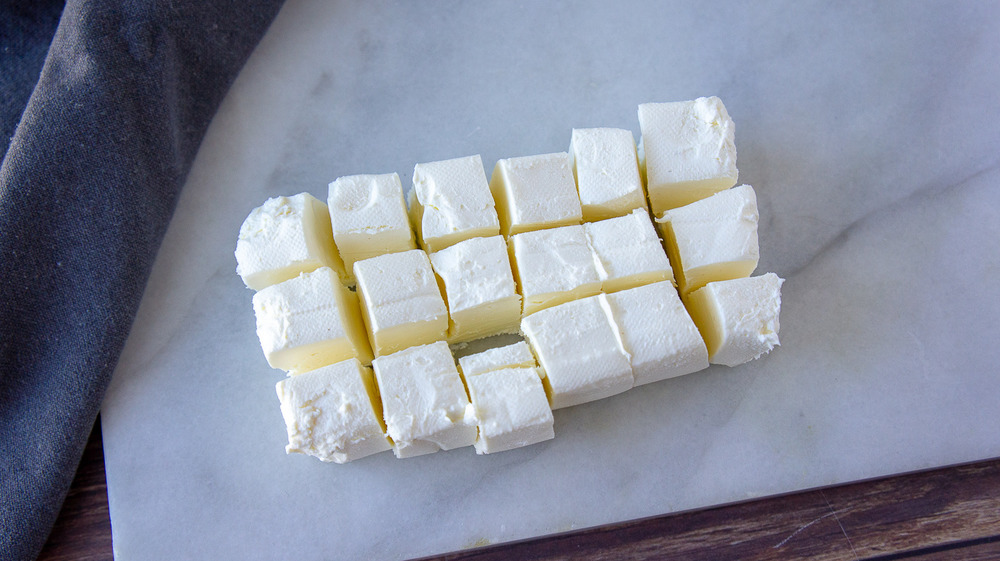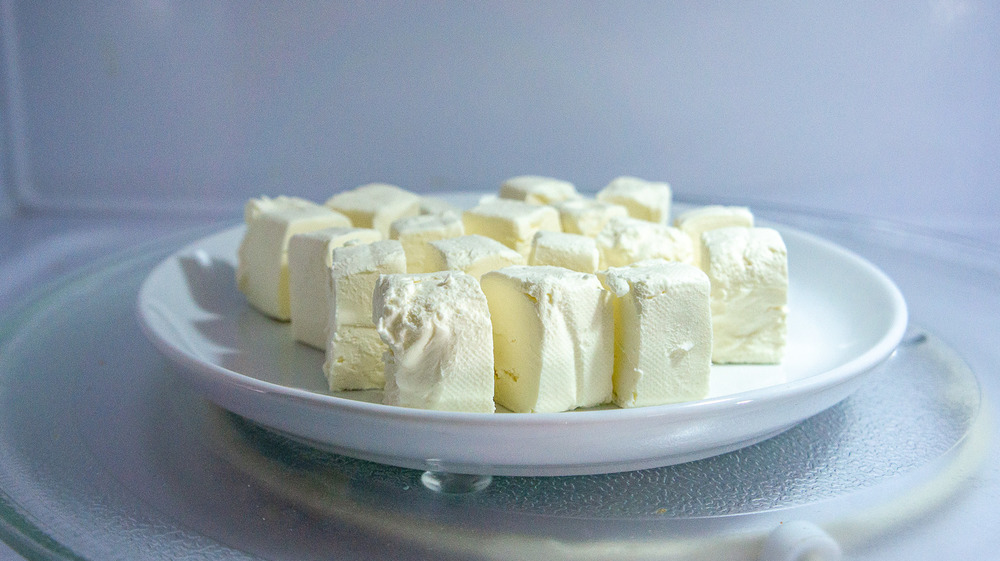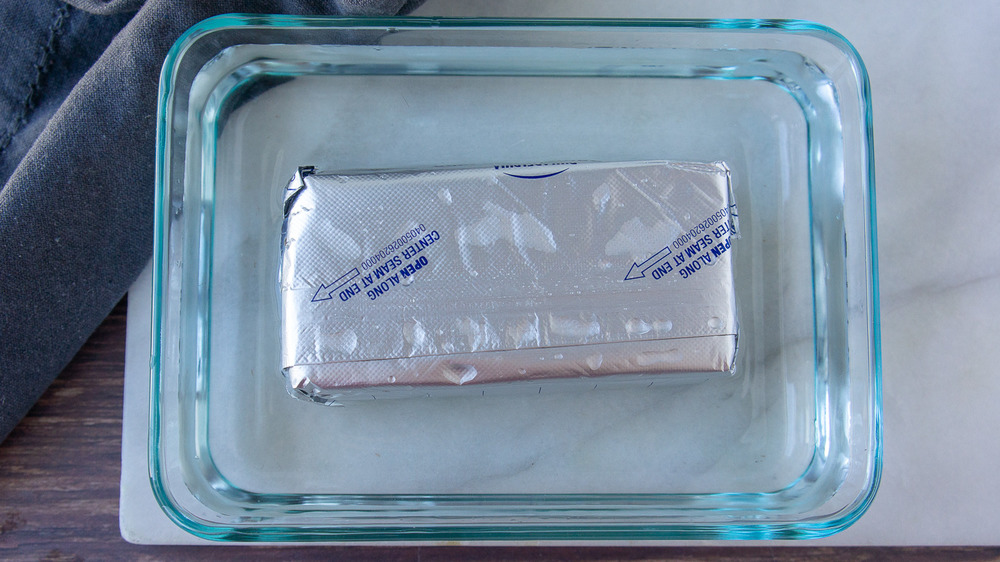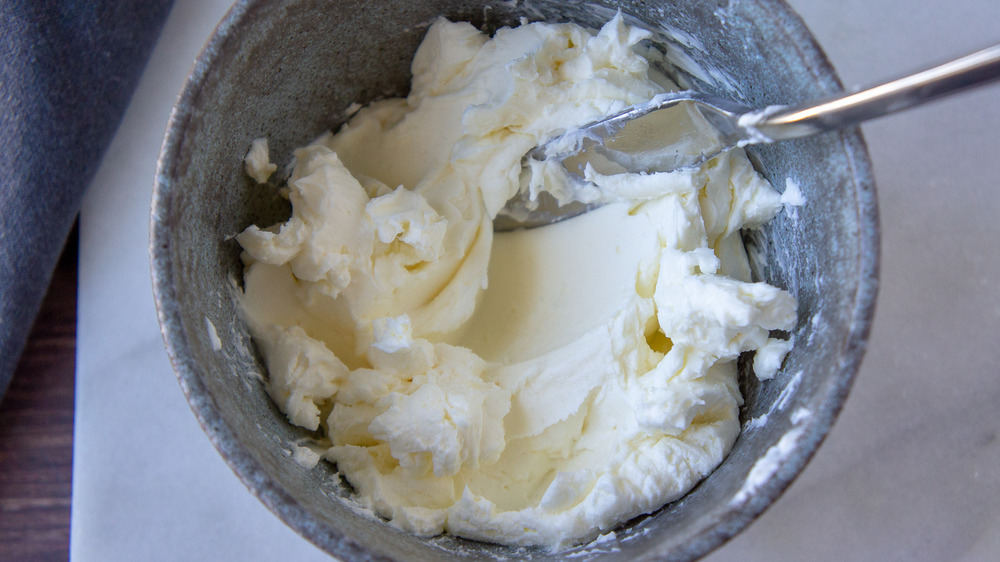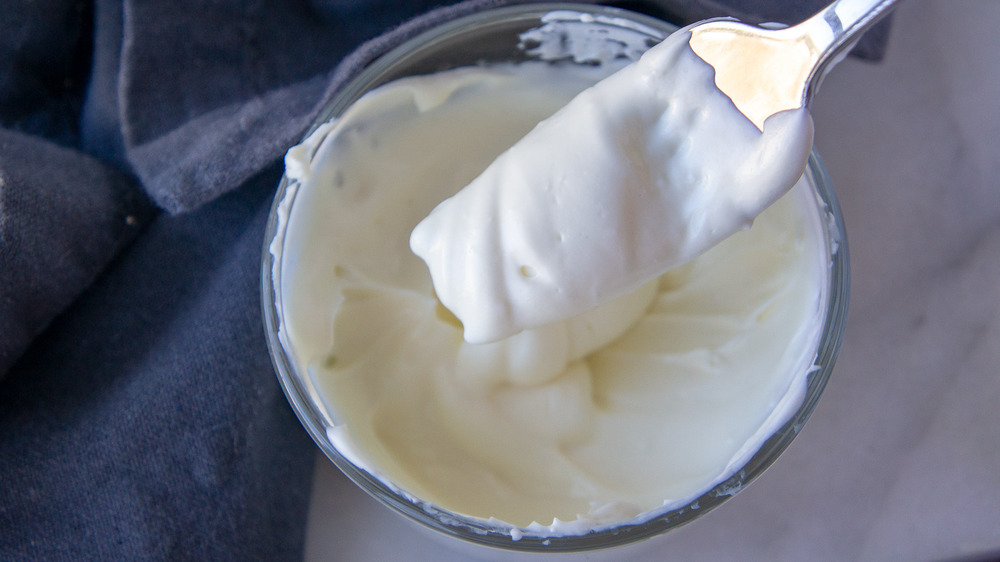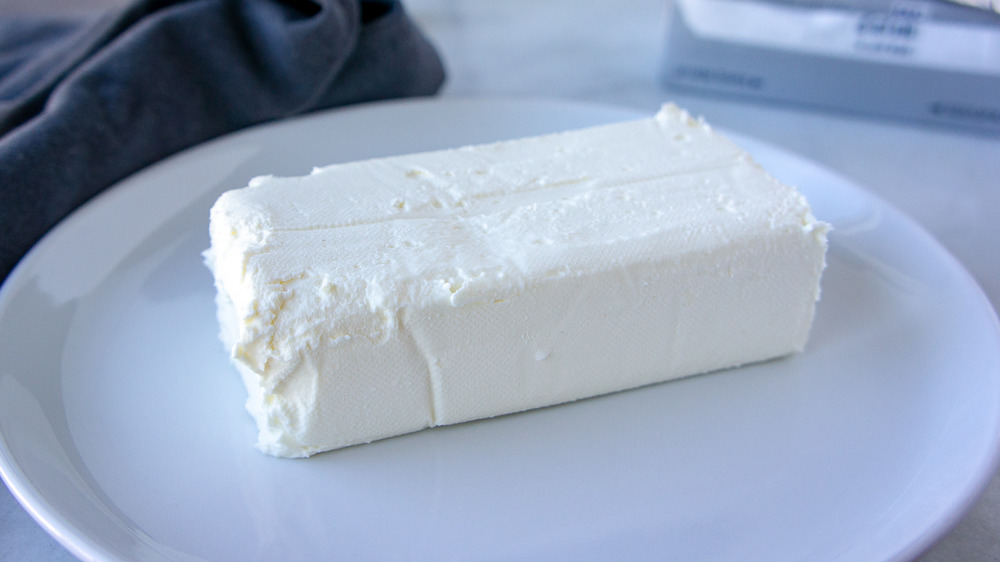How To Soften Cream Cheese
We've all been in that baking bind when you're ready to start your recipe but realize you forgot the all-important "bring to room temperature" step. Starting with ingredients at the proper temperature is key to baking success, so what can you do when that block of cream cheese is still cold and fresh from the fridge? When it comes to softened cream cheese, we have good news: We can get you baking in just a few minutes. There are several methods to soften cream cheese, some faster and some gentler, but all very easy and all perfect for getting you on the way to baking bliss.
Read on to discover how to use a bit of patience, the microwave, warm water, or just good old manual labor for perfectly soft and smooth cream cheese. It'll be ready in no time at all!
Learn more about food from Mikayla on her blog The Flour Handprint.
The simplest method to soften cream cheese
If you're not in a major time crunch, there really isn't all that much for you to do. Pull your cream cheese out of its box and open up the foil wrapper, either leaving it on the open foil or transferring to a plate. Either way, in about 15 to 20 minutes on the counter of a typical kitchen, it'll be soft enough to work with.
Of course, there are plenty of ways to speed this up!
Get your butter knife at the ready for this method to soften cream cheese
If you're just staring at the cream cheese block like a pot of water refusing to boil, let us quicken it up for you. Get out a butter knife and start cutting the large block into smaller pieces. We made two lengthwise slices and a bunch of horizontal cuts to create cream cheese cubes. Separate them slightly to allow for faster softening, about five to ten minutes.
Blast the cream cheese in the microwave quickly
Still not fast enough? Take that whole plate of cream cheese (NOT in the foil), cubed or whole, and place it in your microwave. Let it run for just 15 seconds on high, then remove the plate.
A bowl of warm water for gentle even heat to soften cream cheese
One of the issues with the microwave is the potential for overheating, so if you want to try things a different way, this is a valid option as well. A bowl of hot tap water does the same thing as your microwave a little more gently.
Get the water from your sink really hot, and then pour it over your cream cheese while it's still wrapped in its foil or container. Let it sit for about ten minutes, flipping once or twice.
Once you've discarded the water and dried off the foil package gently, you can open the cream cheese and press in a spoon or knife. If it squishes easily under soft pressure, it's ready to use.
Beat your cream cheese
If you're a direct kind of cook, all this waiting may not be for you. In that case, just get your stand mixer, electric mixer, or sturdy knife ready. Agitation, from the beating of a mixer or a tool in your hand, will heat and soften the cream cheese gently. In about five minutes or less, with some consistent mixing and mashing, the cream cheese will be soft and ready to use.
What happens if the cream cheese melts too much?
Most often the recipes we use cream cheese for call for it to be softened, not melted, but melting can certainly happen when we use heat applications to soften cream cheese.
For both the microwave method and water method, too much heat can cause your cream cheese to get a little melty and lumpy. This is just the solid milk fats melting unevenly, and it's completely normal.
Have no fear, and certainly do not chuck it! Get a fork or whisk and start beating the melted cream cheese until it's smooth and silky. Then, if your recipe uses melted cream cheese, you're good to go. Or, pop it back in the fridge to tighten up a little bit. It'll be back to normal cream cheese consistency again in about an hour.
Softened vs. room temperature cream cheese
Many recipes use the term "room-temp" to describe the butter, egg, and cream cheese additions to them. This is for good reason: Cold ingredients don't incorporate as smoothly together and can make a final product less perfect.
But "room temperature" does not indicate that we should leave our cream cheese out for long periods or until it's warm. Unlike butter, which is pasteurized, high in fat, and low on water, making it safe to soften on the counter for hours on end, cream cheese is susceptible to bacteria and spoiling.
Leave your cream cheese out for no longer than two hours on the counter. Remember, it only takes 15 to 20 minutes to soften! Any longer than two hours, and the risk for food-borne illness from spoilage increases, so whatever you do, don't leave your cream cheese on the counter overnight to soften. Now that you have so many quick and easy methods for softening cream cheese, there's no need to leave it out for that long anyway!
Recipe Card
Read on to discover how to use a bit of patience, the microwave, warm water, or just good old manual labor for perfectly soft and smooth cream cheese.
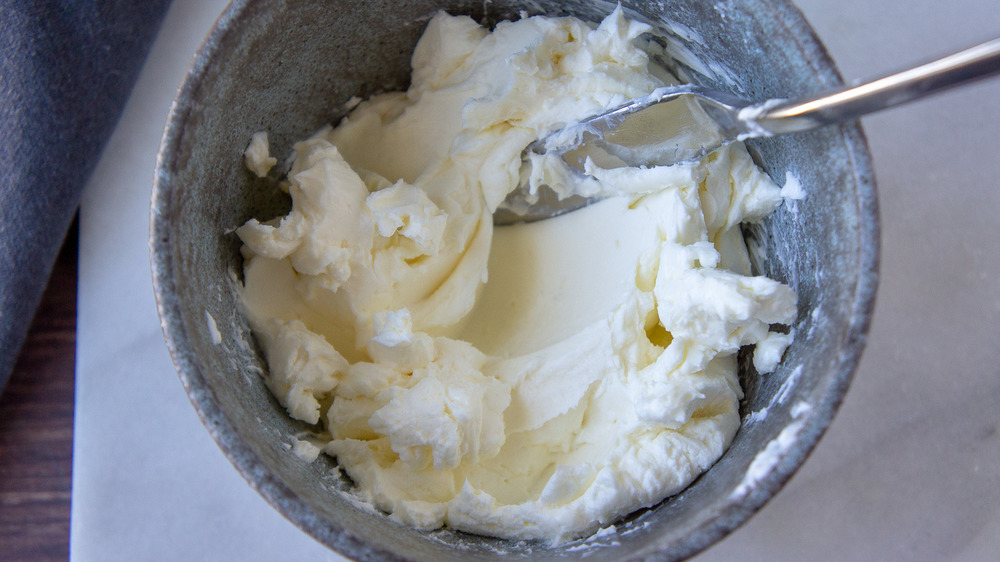
Ingredients
- 8 ounces cream cheese
- Hot water
- Knife
- Microwave-safe plate
- Stand mixer
Directions
- Remove cream cheese from all packaging, and let it sit out at room temperature until it's softened.
- Remove cream cheese from all packaging and either leave whole or chop into squares onto a plate. Leave out for 5 to 15 minutes.
- Remove cream cheese from all packaging and place on a microwave safe plate. Place in the microwave on high for 15 seconds.
- Remove cream cheese from all packaging except for the foil. Place in a bowl of hot tap water for 10 minutes, flipping once.
- Remove cream cheese from all packaging and using an electric mixer, stand mixer, or fork, beat and mix the cream cheese until it's softened to your liking.
